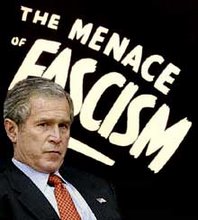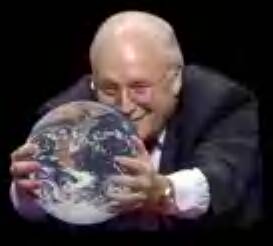New Glimpse at Players in Group Led by Cheney
WASHINGTON, July 18 — For six years, Vice President Dick Cheney has guarded the secrecy of the discussions and participants in his energy task force, which produced a report in May 2001 calling for accelerated development of domestic oil and gas supplies to deal with the nation’s energy needs.
Now, thanks to an unidentified former White House official who provided The Washington Post a partial list of individuals, companies and groups that met with the task force, it is possible to identify with greater precision who may have influenced its deliberations.
The list bears the names, The Post reported Wednesday, of nearly 300 people and organizations that met with the vice president or his staff during the months that the task force was preparing its report. It is not, however, the complete accounting that Congress and some environmental groups have demanded.
It has long been known that the oil industry was well represented at the task force meetings and found a receptive audience in Mr. Cheney, who had spent five years as chief executive of Halliburton, a leading oil-field-services company. He was given the energy assignment by President Bush, who himself had had a career in the oil business.
Virtually every major oil and diversified energy company, from British Petroleum to Enron to Reliant Energy, participated in one or more meetings of the Cheney group, according to the list. Trade groups and lobbyists representing industrial energy users, pipeline companies, utilities and mining concerns were also amply represented at multiple task force sessions. By contrast, leaders of 13 environmental groups were invited to a single session late in the process, weeks after most of the industry representatives had been heard.
Employees of companies that participated in the deliberations have given millions to Republican candidates and causes since 1999 and have been among the party’s largest donors over that period, according to campaign finance records. And employees of the companies on the new list contributed more than $570,000 to the Bush-Cheney campaigns of 2000 and 2004, the records show.
There is little surprising about the people and interests Mr. Cheney consulted in drawing up his energy plan, and many participants long ago came forward to confirm that they had taken part. In fact, officials of a number of companies who do not appear on the latest list acknowledged years ago that they spoke to the task force. Among those companies are Ashland Oil, Anadarko Petroleum, Chevron and Peabody Energy, the nation’s largest coal company.
But the White House has refused to give Congress the names of participants and has vigorously defended the secrecy of the deliberations in court, saying confidentiality of internal executive branch discussions is crucial to the separation of powers. The Supreme Court upheld that position in 2004.
Asked about The Post’s report, Lea Anne McBride, a spokeswoman for Mr. Cheney, would not confirm the authenticity of the list or otherwise comment on the task force’s deliberations. She said in a statement that the vice president “respectfully but resolutely” asserts the importance of executive branch confidentiality on matters of national policy.
The energy debate in the United States has moved far beyond where it stood in 2001, when the emphasis in the White House and among Republicans in Congress was on producing more power from oil, coal and nuclear plants. Many of those in the oil and electric power industries have expressed disappointment at the Bush administration’s inability to open vast new tracts of public lands and waters to oil drilling and speed the licensing of new nuclear generators.
Red Cavaney, president of the American Petroleum Institute, a trade group that represents the nation’s major oil companies, said he had met several times with Mr. Cheney’s aides and submitted detailed position papers. He said that his group’s recommendations on new drilling in Alaska, the Rockies and offshore had been reflected in the final report, but that Congress and the administration had been unable to follow through.
(In accordance with Title 17 U.S.C. Section 107, this material is distributed without profit to those who have expressed a prior interest in receiving the included information for research and educational purposes. I.U. has no affiliation whatsoever with the originator of this article nor is I.U endorsed or sponsored by the originator.)
The Nazis, Fascists and Communists were political parties before they became enemies of liberty and mass murderers.




No comments:
Post a Comment